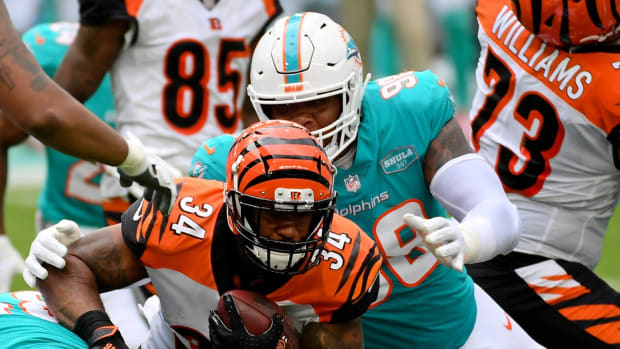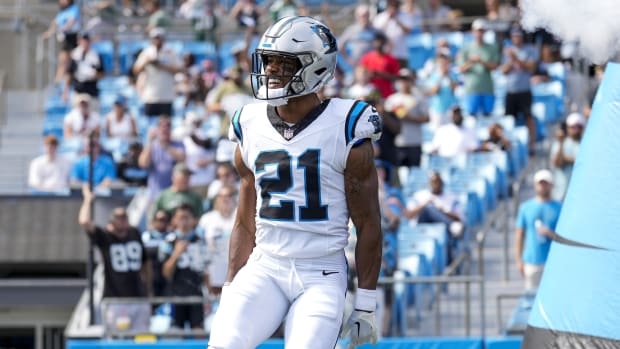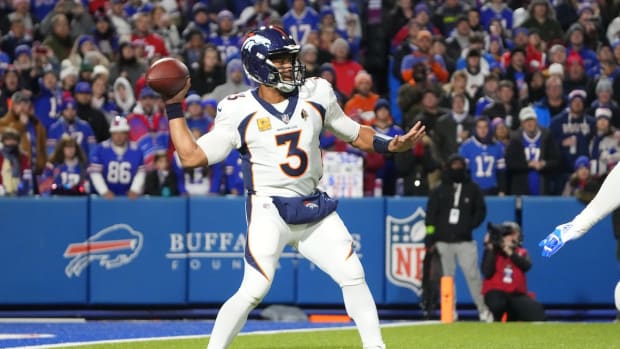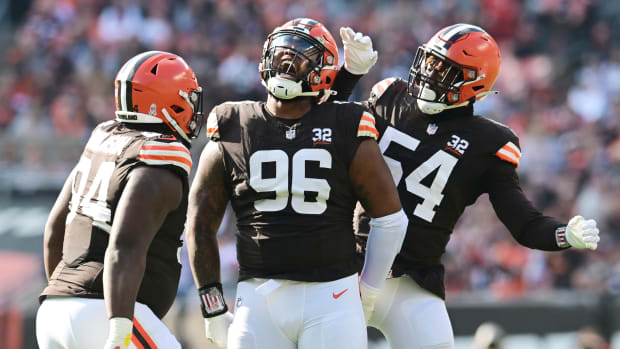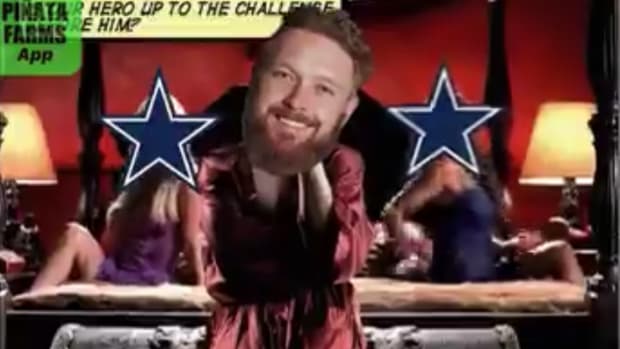QB acumen, vision make Adam Gase right choice to turn Dolphins around
The Dolphins’ hire of former Broncos and Bears offensive coordinator Adam Gase as the 12th head coach in the history of the franchise has been universally lauded as a great move. Gase had turned himself into one of the most appealing head coaching candidates over the last few years in his work with quarterbacks Tim Tebow, Peyton Manning and Brock Osweiler in Denver, and Jay Cutler in Chicago. It was not a huge surprise, therefore, that he found himself as the first head coach hired as several teams look to fill vacancies this month.
The 37-year-old Gase is a good choice to steer a franchise that has had its share of turmoil in the front office since Ross became the team’s primary owner in 2009. Miami won the AFC East in 2008 with an 11–5 record but hasn’t had a winning season since. In that time, the Dolphins have had five head coaches—including two interim coaches after midseason firings—two general managers and three offensive coordinators.
He’s got a proven track record with quarterbacks and offensive structures, and he showed a lot of backbone before the 2015 season when he balked at the 49ers’ insistence that defensive line coach Jim Tomsula be retained on his staff should Gase get the head coach job. That proved Gase to be a man willing to bet on himself and wait for the right opportunity. Certainly, the Dolphins’ insistence during the introductory presser that Gase would have control over the 53-man roster, and Gase’s subsequent announcement that he will be responsible for the play-calling and the development of quarterback Ryan Tannehill, outlines why this seems to be the right fit.
2016 NFL playoff predictions: Our picks for Super Bowl 50
Now, Tannehill will find out how good Gase is. Four years into his tenure as the Dolphins’ starting quarterback, Tannehill has taken a lot of criticism for a player with 87 career touchdowns to 54 interceptions, and as much as his own play has been uneven at times, it’s hard to put everything on a young quarterback who has had three different offensive coordinators (Mike Sherman, Bill Lazor and Zac Taylor) in four seasons. Part of Gase’s strength as a coach is that he can bring stability to teams and quarterbacks who haven’t seen enough from his predecessors, which makes him an ideal fit for his situation. Young quarterbacks need consistent structure to succeed, and Tannehill, who was a full-time quarterback at Texas A&M for just two seasons before he headed to the NFL in 2012, hasn’t had that. Sherman was a disciple of the West Coast Offense, while Lazor and 2015 interim coordinator Taylor tried to make things work with fewer play calls and more option concepts.
In addition, Tannehill has always been a mechanically inconsistent player, and that falls as much on the coaching around him as it does on his own shoulders. Joe Philbin was brought in as head coach in 2012 because of his history with Aaron Rodgers, and the franchise’s belief that Philbin would turn Tannehill into a franchise quarterback. That never happened, in part because Philbin was so overwhelmed by the demands of the job. Tannehill needs more stability in the day-to-day schematics, and he needs a clear combination of responsibility on his own shoulders and accountability from the coaching staff.
Gase gained his name as the Broncos’ quarterbacks coach in 2011 and got his first shot as an offensive coordinator the year after. He worked with two drastically different players in Tim Tebow and Peyton Manning, and he was able to balance the need for schematic simplicity in Tebow’s case with total adherence to structure in Manning’s case. The common perception of Manning’s offensive coordinators is that they’re mere water-carriers for Manning as he runs the show, but Manning has referred to Gase as one of the smartest people he knows, and Denver’s struggles on offense in the wake of Gase’s departure speak to his ability to do what’s best for the quarterbacks he has.
Dan Quinn understands the struggle for sought-after coaches in playoffs
Gase did just that for Cutler in 2015, after he followed ex-Broncos coach John Fox to the Bears. Cutler has had several different coaches and coordinators throughout his career, and it has always been a challenge to get him to play consistently within structure. Gase played to Cutler’s strengths and worked to minimize his weaknesses without trying to completely limit his ability to improvise, and Cutler responded with the second-lowest interception percentage of his career (2.3%). Gase assembled a more balanced offense, and it appeared that Cutler wanted more than a year under his direction.
“I wish he could stay in Chicago, but everyone has a journey and this is the next part of his,” Cutler said of Gase. “His work with quarterbacks is well-documented, and I know firsthand how good he is.”
The Dolphins have estimable talent on both sides of the ball. Tannehill has what it takes to be successful with the right coach. Jarvis Landry had a breakout season as the centerpiece of the passing game, the offensive line is flawed but fixable, and running back Lamar Miller can be a franchise back if he’s used correctly. Now, the Dolphins have a coach who has proven to be a master chef with the groceries he’s been given. The wisdom of this hire will ultimately be determined by Tannehill’s development, but for now, this looks like the best possible choice for the Dolphins and for Gase.
































